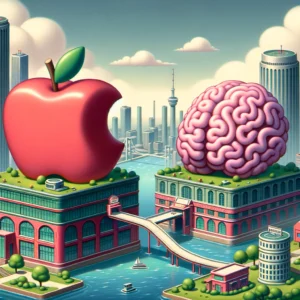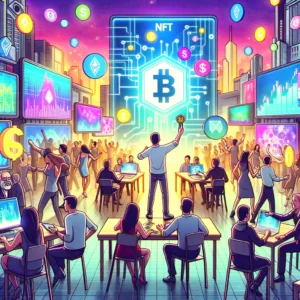In the digital age, where data security and transparency are paramount, blockchain technology has emerged as a game-changer. This revolutionary technology has the potential to transform various industries by providing a secure, transparent, and efficient way to conduct transactions. In this comprehensive beginner’s guide, we will delve into the intricacies of blockchain, exploring its fundamentals, types, benefits, and real-world applications. Join us, as we unlock the future of transactions and discover how blockchain is poised to revolutionize modern business practices. Join the Discord community to engage with other enthusiasts and stay updated on the latest trends.
Blockchain Basics
In the realm of digital transactions, blockchain technology stands as a beacon of innovation, promising increased security, transparency, and efficiency. At its core, blockchain is a decentralized, distributed ledger system that records transactions across multiple computers, ensuring that once a record is entered, it cannot be retroactively altered without modifying all subsequent blocks. This inherent security stems from the use of cryptographic techniques, making blockchain virtually tamper-proof.
Beyond its robust security measures, blockchain also offers unparalleled transparency. All transactions are publicly visible and verifiable, fostering trust and accountability among parties involved. This eliminates the need for intermediaries, enabling efficient and direct peer-to-peer transactions. By cutting out the middleman, blockchain streamlines processes, reduces costs, and accelerates the speed of transactions.
The decentralized nature of blockchain further enhances its resilience. Unlike traditional centralized systems, blockchain is not vulnerable to single points of failure. Instead, it operates on a peer-to-peer network, where each participant maintains a complete copy of the ledger. This distributed architecture makes blockchain highly resistant to censorship, fraud, and manipulation.
As we delve deeper into the world of blockchain, we will discover its diverse applications across industries, from finance and supply chain management to healthcare and voting systems. Its potential to revolutionize various sectors is undeniable, and its impact will continue to grow as the technology evolves. Join us on this exciting journey as we explore the intricacies of blockchain and unlock the future of secure and efficient transactions.
Blockchain Breakdown: Step-by-Step
Blockchain technology is based on the concept of a distributed ledger, which means that there is no central authority controlling the data. Instead, the data is stored across multiple computers, or nodes, in the network. This makes it very difficult for anyone to tamper with the data, as they would need to change the data on all of the nodes in the network, which is virtually impossible.
Here’s a step-by-step breakdown of how blockchain works:
1. A transaction is initiated by one party and broadcast to the network.
2. The transaction is verified by the nodes in the network.
3. The verified transaction is added to a block of transactions.
4. The block of transactions is added to the blockchain.
5. The process repeats itself, with new blocks of transactions being added to the blockchain over time.
Each block in the blockchain contains a cryptographic hash of the previous block, which means that if any data in a block is changed, the hash of that block will also change. This makes it very difficult for anyone to tamper with the data in the blockchain, as they would need to change the data in all of the subsequent blocks as well.
The blockchain is a continuously growing list of records, called blocks. Each block contains a cryptographic hash of the previous block, a timestamp, and transaction data. By design, blockchain is inherently resistant to modification of the data. This is because once a block is added to the chain, it is very difficult to alter it without the alteration of all subsequent blocks, which requires collusion of the network majority.





